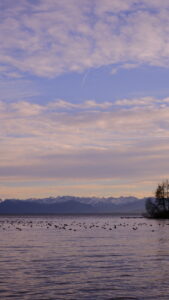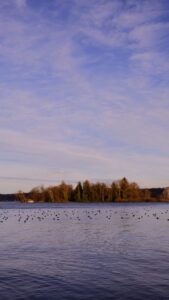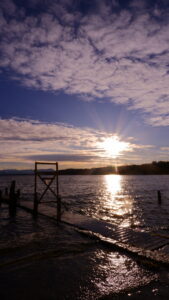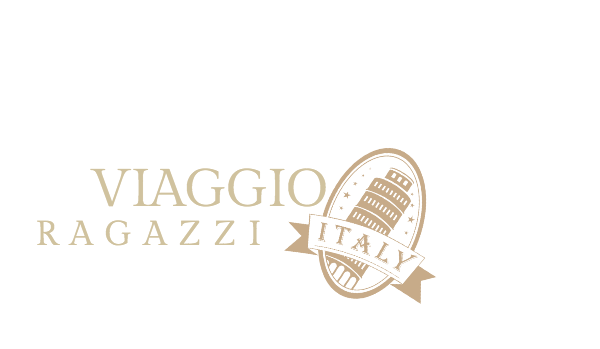Lake Starnberg is a picturesque lake located in Germany. With its rich history, stunning natural beauty, and a wide range of recreational activities, it has become a popular destination for locals and tourists alike. This article explores the history of Lake Starnberg, its geography and natural beauty, recreational activities, cultural and artistic heritage, and the gastronomy and local cuisine. Here are the key takeaways:
Key Takeaways
- Lake Starnberg has a significant historical importance in Bavarian history.
- The lake offers a variety of water sports and boating activities.
- There are numerous hiking and cycling trails around the lake for outdoor enthusiasts.
- Lake Starnberg is home to historic castles, palaces, and museums.
- Visitors can enjoy traditional Bavarian dishes and local produce at the lake’s gastronomic establishments.



The History of Lake Starnberg
Formation and Early Settlements
Lake Starnberg was formed during the last ice age, approximately 20,000 years ago. The melting glaciers carved out a deep basin, which eventually filled with water, creating the lake we see today. The area surrounding the lake has been inhabited since prehistoric times, with evidence of early settlements dating back to the Neolithic period.
The lake’s strategic location made it an important center of trade and commerce in ancient times. It served as a vital transportation route for goods and people, connecting various settlements in the region. The lake also played a significant role in the development of Bavaria, serving as a hub for economic and cultural exchange.
Key Points:
- Lake Starnberg formed during the last ice age
- Evidence of early settlements dating back to the Neolithic period
- Strategic location for trade and commerce
- Hub for economic and cultural exchange in Bavaria
Significance in Bavarian History
Lake Starnberg holds great historical significance in Bavarian history. It has been a popular destination for centuries, attracting royalty, artists, and intellectuals. The lake served as a source of inspiration for many renowned writers and painters, who found solace in its tranquil beauty.
Lake Starnberg also played a role in significant historical events. One such event is the mysterious death of King Ludwig II, also known as the ‘Mad King of Bavaria’. His body was found in the lake under mysterious circumstances, sparking numerous theories and conspiracies.
Lake Starnberg’s historical importance is further highlighted by the presence of historic castles and palaces along its shores. These architectural marvels offer a glimpse into the rich history and cultural heritage of the region.
To truly appreciate the significance of Lake Starnberg in Bavarian history, one must explore its captivating stories and immerse themselves in its timeless charm.
Famous Historical Events at Lake Starnberg
Lake Starnberg has been the backdrop for several noteworthy historical events throughout the centuries. One of the most famous events is the mysterious death of King Ludwig II of Bavaria. On June 13, 1886, King Ludwig II was found dead in the waters of Lake Starnberg under mysterious circumstances. To this day, the exact cause of his death remains a subject of speculation and intrigue.

Another significant historical event associated with Lake Starnberg is the Starnberg Train Disaster. On February 9, 1902, a train carrying 200 passengers derailed and plunged into the lake near the town of Tutzing. The accident resulted in the loss of many lives and remains one of the deadliest train disasters in German history.
Lake Starnberg’s rich history also includes the Bavarian Revolution of 1918-1919. During this period, political unrest and social upheaval swept across Bavaria, and Lake Starnberg became a gathering place for revolutionaries and political activists.
The historical events at Lake Starnberg serve as a reminder of the region’s fascinating past and continue to captivate visitors from around the world.
Geography and Natural Beauty
Location and Surroundings
Lake Starnberg is located in the state of Bavaria, Germany, approximately 25 kilometers southwest of Munich. It is situated at the northern foothills of the Alps, offering breathtaking views of the surrounding mountain ranges. The lake itself is the fifth largest in Germany, with a surface area of about 56 square kilometers. The crystal-clear waters of Lake Starnberg are fed by several small rivers and streams, creating a pristine and serene environment for visitors to enjoy.
- The lake is surrounded by charming towns and villages, such as Starnberg, Tutzing, and Feldafing, each with its own unique character and attractions.
- The picturesque landscape around the lake is dotted with lush forests, rolling hills, and meadows, providing ample opportunities for nature lovers to explore and immerse themselves in the beauty of the region.
Tip: Don’t miss the opportunity to take a leisurely stroll along the lakeside promenade in Starnberg, where you can enjoy stunning views of the lake and the majestic Alps in the distance.
Flora and Fauna
Lake Starnberg is home to a diverse range of flora and fauna. The surrounding area is characterized by lush greenery and a variety of plant species. Some of the common plants found in the region include wildflowers, shrubs, and trees. The lake itself supports a rich ecosystem, with numerous species of fish, birds, and insects.
In terms of wildlife, Lake Starnberg is known for its population of waterfowl such as ducks, swans, and geese. These birds can often be seen swimming gracefully on the lake’s surface. The lake is also home to several species of fish, including trout, pike, and perch. Anglers can enjoy fishing for these species in the lake’s clear waters.
Visitors to Lake Starnberg can explore the diverse flora and fauna through various activities such as birdwatching and nature walks. The lake’s natural beauty provides a serene environment for observing and appreciating the local wildlife. Whether it’s spotting a rare bird or admiring the vibrant colors of a wildflower, the flora and fauna of Lake Starnberg offer a captivating experience for nature enthusiasts.
Scenic Landmarks
Lake Starnberg is home to several scenic landmarks that attract visitors from all over the world. One of the most iconic landmarks is the Rose Island, a small island located in the middle of the lake. The island is known for its beautiful rose gardens and picturesque views. Visitors can take a boat ride to the island and explore its tranquil surroundings.
Another notable landmark is the Buchheim Museum, which is situated on the eastern shore of the lake. The museum is dedicated to contemporary art and houses a diverse collection of paintings, sculptures, and installations. It also offers stunning views of the lake and the surrounding mountains.
For nature enthusiasts, the Osterseen Nature Park is a must-visit. This nature park is located near Lake Starnberg and is home to a network of hiking trails that lead to breathtaking viewpoints. Visitors can enjoy the peaceful atmosphere and observe the diverse flora and fauna of the region.
In addition to these landmarks, Lake Starnberg is also known for its charming lakeside villages. These villages, such as Tutzing and Starnberg, offer a glimpse into the local culture and architecture. Visitors can stroll along the waterfront promenades, explore the historic buildings, and indulge in the local cuisine.
Whether you’re interested in art, nature, or simply enjoying the scenic beauty, Lake Starnberg’s landmarks have something to offer for everyone.
Recreational Activities at Lake Starnberg
Water Sports and Boating
Lake Starnberg offers a wide range of water sports and boating activities for visitors to enjoy. Whether you’re a beginner or an experienced enthusiast, there’s something for everyone. Sailing is a popular choice, with several sailing clubs and schools offering lessons and rentals. Kayaking and paddleboarding are also great options for exploring the lake’s calm waters. For those seeking a thrill, waterskiing and wakeboarding are available. Fishing is another popular activity, with the lake being home to a variety of fish species. Anglers can try their luck from the shore or rent a boat for a more adventurous experience.
If you prefer a more leisurely experience, boat tours are a great way to explore the lake and take in the stunning scenery. Several companies offer guided tours, allowing you to sit back and relax while enjoying the views. Whether you choose a motorboat, a sailboat, or a traditional wooden boat, a boat tour is a must-do activity at Lake Starnberg.
Tip: Don’t forget to bring sunscreen and a hat to protect yourself from the sun while enjoying water sports and boating activities.
Hiking and Cycling Trails
Hiking and cycling enthusiasts will be delighted by the numerous trails that surround Lake Starnberg. The trails offer breathtaking views of the lake and its picturesque surroundings. Whether you prefer a leisurely stroll or a challenging hike, there is a trail for every level of fitness and experience.
For those who enjoy cycling, there are well-maintained cycling paths that wind their way around the lake. Cyclists can explore the beautiful countryside and enjoy the fresh air as they pedal along the scenic routes.
Here are some popular hiking and cycling trails around Lake Starnberg:
- Lake Starnberg Loop Trail: This 46-kilometer trail circles the entire lake, offering stunning views and opportunities to explore charming lakeside towns.
- Andechs Monastery Trail: This trail leads to the famous Andechs Monastery, known for its brewery and panoramic views of the lake.
- Pöcking Forest Trail: This trail takes you through the peaceful Pöcking Forest, where you can admire the diverse flora and fauna.
Tip: Don’t forget to bring comfortable shoes and plenty of water for your hiking or cycling adventure!
Fishing and Angling
Fishing and angling are popular activities at Lake Starnberg, attracting both locals and tourists. The lake is known for its diverse fish population, including species such as trout, pike, and perch. Anglers can enjoy a peaceful day on the water, surrounded by the stunning natural beauty of the lake and its surroundings.
For those interested in fishing at Lake Starnberg, it is important to note that a fishing license is required. Licenses can be obtained from local authorities or fishing associations. Additionally, there are designated fishing areas and regulations in place to ensure the sustainability of the fish population.
Tips for a successful fishing experience at Lake Starnberg:
- Choose the right bait and fishing technique based on the target fish species.
- Be mindful of the fishing regulations and respect the designated fishing areas.
- Consider hiring a local guide who can provide valuable insights and increase your chances of a successful catch.
- Enjoy the serenity of the lake and take in the breathtaking views while waiting for the fish to bite.
Cultural and Artistic Heritage
Historic Castles and Palaces
Lake Starnberg is home to several historic castles and palaces that showcase the rich cultural heritage of the region. One of the most notable landmarks is the Berg Castle, which dates back to the 13th century. This medieval fortress offers breathtaking views of the lake and surrounding countryside. Another must-visit is the Possenhofen Castle, a former royal residence that has been beautifully preserved. Visitors can explore its elegant rooms and learn about the fascinating history of the Bavarian royal family.
In addition to these grand structures, there are also smaller castles and palaces scattered along the shores of Lake Starnberg. These hidden gems provide a glimpse into the aristocratic lifestyle of the past. One such example is the Bernried Castle, which now serves as a cultural center and museum. Here, visitors can admire art exhibitions, attend concerts, and explore the beautifully landscaped gardens.
For history enthusiasts, a visit to the castles and palaces of Lake Starnberg is a journey back in time. Each of these architectural marvels tells a unique story and offers a glimpse into the region’s rich history and cultural heritage.
Museums and Art Galleries
Lake Starnberg is home to a variety of museums and art galleries that showcase the rich cultural heritage of the region. These institutions offer visitors a chance to explore the history, art, and traditions of Lake Starnberg.
One of the notable museums in the area is the Starnberger See Museum, which is dedicated to preserving the history and natural beauty of the lake. Here, visitors can learn about the formation of the lake, its significance in Bavarian history, and the famous historical events that have taken place here.
Another must-visit is the Bernrieder Park Museum, located in the picturesque Bernrieder Park. This museum houses a collection of contemporary art and hosts temporary exhibitions throughout the year.
For art enthusiasts, the Schlossmuseum Murnau is a must-see. This museum is housed in a beautiful castle and features a diverse collection of art, including works by famous artists such as Wassily Kandinsky and Gabriele Münter.
Visiting these museums and art galleries is a great way to immerse yourself in the cultural and artistic heritage of Lake Starnberg.
Local Festivals and Events
Lake Starnberg is known for its vibrant local festivals and events that showcase the region’s rich cultural heritage. One of the most popular events is the Starnberger See Fest, held annually in the summer. This festival celebrates the lake and its surroundings with live music, traditional Bavarian food, and a variety of activities for all ages. Visitors can enjoy boat rides, explore local crafts and art exhibitions, and participate in water sports competitions.
Another highlight is the Roseninsel Festival, which takes place on the picturesque Roseninsel, a small island in Lake Starnberg. This festival celebrates the beauty of nature and features music performances, art installations, and guided tours of the island’s gardens. It’s a great opportunity to immerse yourself in the tranquil atmosphere and enjoy the stunning views of the lake.
For those interested in history, the Ludwig II Festival is a must-visit. This festival pays homage to King Ludwig II, who had a deep connection to Lake Starnberg. The festival includes theatrical performances, concerts, and exhibitions that bring the king’s legacy to life. It’s a unique chance to learn about the fascinating history of the region and experience the grandeur of Ludwig II’s era.
Gastronomy and Local Cuisine
Traditional Bavarian Dishes
Bavarian cuisine is known for its hearty and flavorful dishes that showcase the region’s rich culinary heritage. Pork knuckle, also known as Schweinshaxe, is a popular Bavarian specialty. It is a tender and juicy roasted pork dish with crispy skin, often served with sauerkraut and dumplings. Another iconic dish is Weisswurst, a traditional Bavarian sausage made from minced veal and pork back bacon. It is typically flavored with parsley, lemon, mace, onions, ginger, and cardamom. Weisswurst is traditionally enjoyed with sweet mustard and freshly baked pretzels.
In addition to these meat-based dishes, Bavarian cuisine also offers a variety of vegetarian options. One such dish is Käsespätzle, a delicious combination of homemade egg noodles, melted cheese, and caramelized onions. It is often served as a main course or as a side dish with roasted meats. Obatzda, a creamy cheese spread made from Camembert, butter, onions, and spices, is another popular vegetarian option. It is typically served with fresh pretzels or bread.
Here is a table showcasing some traditional Bavarian dishes:
| Dish | Description |
|---|---|
| Schweinshaxe | Roasted pork knuckle with crispy skin |
| Weisswurst | Traditional Bavarian sausage made from veal and pork |
| Käsespätzle | Homemade egg noodles with melted cheese and caramelized onions |
| Obatzda | Creamy cheese spread made from Camembert, butter, onions, and spices |
Tip: When dining in Bavaria, don’t forget to try the local specialty beers that pair perfectly with these traditional dishes. Prost!
Local Breweries and Beer Gardens
When it comes to enjoying a refreshing beer in a picturesque setting, Lake Starnberg has plenty to offer. The region is known for its local breweries that produce a wide variety of craft beers. Visitors can sample these unique brews at the many beer gardens scattered around the lake.
One popular brewery in the area is the Starnberger Brauhaus, which has been producing traditional Bavarian beers since 1867. Their beers are made using locally sourced ingredients and follow time-honored brewing techniques. The brewery also offers guided tours where visitors can learn about the beer-making process and taste different beer styles.
For those looking to relax and enjoy a cold beer outdoors, the Seehof Beer Garden is a great choice. Located right on the shores of Lake Starnberg, this beer garden offers stunning views of the lake and the surrounding mountains. Visitors can unwind in the spacious outdoor seating area while sipping on a refreshing beer and indulging in traditional Bavarian snacks.
Whether you’re a beer enthusiast or simply looking to experience the local culture, the breweries and beer gardens at Lake Starnberg provide a unique and enjoyable experience.
Farmers Markets and Local Produce
When it comes to experiencing the local flavors of Lake Starnberg, a visit to the farmers markets is a must. These markets offer a wide variety of fresh produce, including fruits, vegetables, dairy products, and meats. The farmers take pride in their organic farming practices, ensuring that the produce is of the highest quality.
In addition to the fresh produce, the farmers markets also showcase a range of locally made products. From homemade jams and preserves to artisanal cheeses and baked goods, there is something for everyone to enjoy.
To make the most of your visit to the farmers markets, here are a few tips:
- Arrive early to get the best selection of produce and products.
- Don’t be afraid to ask the farmers for recommendations or cooking tips.
- Bring your own reusable bags to reduce waste.
Pro tip: Try the local honey, known for its unique flavors and health benefits.
Whether you’re a food enthusiast or simply looking to immerse yourself in the local culture, the farmers markets at Lake Starnberg are a delightful experience that should not be missed.
Conclusion
In conclusion, Lake Starnberg is a picturesque destination in Germany that offers a perfect blend of natural beauty and cultural attractions. Whether you are interested in water sports, hiking, or exploring historical sites, this enchanting lake has something for everyone. With its crystal-clear waters, charming towns, and stunning landscapes, a visit to Lake Starnberg is truly a memorable experience. So pack your bags and embark on a journey to discover the wonders of Lake Starnberg today!
Frequently Asked Questions
Is Lake Starnberg a natural or man-made lake?
Lake Starnberg is a natural lake that was formed during the last ice age.
How deep is Lake Starnberg?
Lake Starnberg has a maximum depth of approximately 127 meters (417 feet).
Are there any water sports activities available at Lake Starnberg?
Yes, Lake Starnberg offers a variety of water sports activities such as sailing, windsurfing, and swimming.
What are some popular hiking trails near Lake Starnberg?
Some popular hiking trails near Lake Starnberg include the Five-Lake Hike and the King’s Path.
Are fishing permits required to fish in Lake Starnberg?
Yes, fishing permits are required to fish in Lake Starnberg. They can be obtained from local authorities.
What are some traditional Bavarian dishes that can be found near Lake Starnberg?
Some traditional Bavarian dishes that can be found near Lake Starnberg include Weisswurst, Schweinshaxe, and Pretzels.
